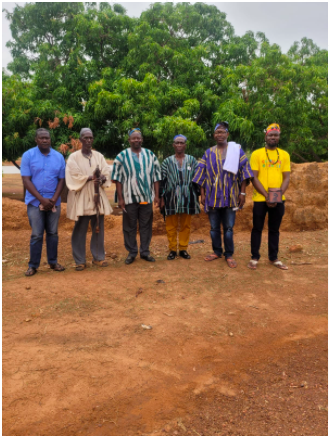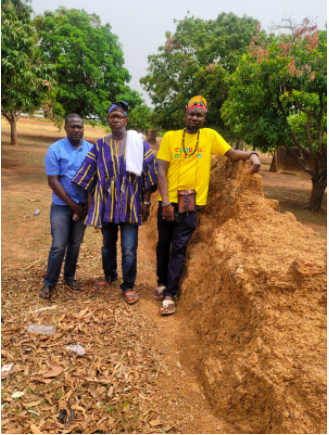The Taste Of Afrika team as part of preparations towards the upcoming Cultural Oneness Festival slated for November 13-16th of this year visited the great Nalerigu Defence Wall.
The objective was to explore the tourism opportunities within the Northern region and how they can use Cultural Oneness Festival to attract tourists into the North-East region and how to develop the sector.

The NaJeringa Wall is easy and free to visit. It is located just off to the right of the main road into Nalerigu on the west side of the town’s reservoir.
It is located among an orchard of mango trees which were planted around it in recent decades to prevent erosion.
History of the Nalerigu Defense Wall
The Nalerigu Defence Wall is the remains of the Naa Jaringa Walls, which lie under a grove of trees.
Built in the mid-1700s by a legendary Mamprusi king to defend the capital of Nalerigu against raiders, the ruins of this wall still stand today.
Often called Nalerigu’s “Slave Defense Wall,” there is a lot of mystery and myth surrounding why and how it was built.

The wall is located in the village of Nalerigu in the East Mamprusi District, about 120 km south-east of Bolgatanga, about 156 km from Tamale and 8 km past Gambaga, in the Northern Region of Ghana.
This wall was built in the 16th century by Naa Jaringa (named after the African viper), a powerful chief of the Mamprusi ethnic group. The Defence Wall initially surrounded the entire village, but now only a few ruins remain.
The slave route, between Ouagadogou in Burkina Faso and Djenne in Mali, passed close by. The wall was erected for two reasons: firstly, to protect inhabitants from slave raiders, and secondly, to ensure that Naa Jaringa’s name would always be remembered.
According to local tradition, the wall was built with stones, mud, honey and milk.



















